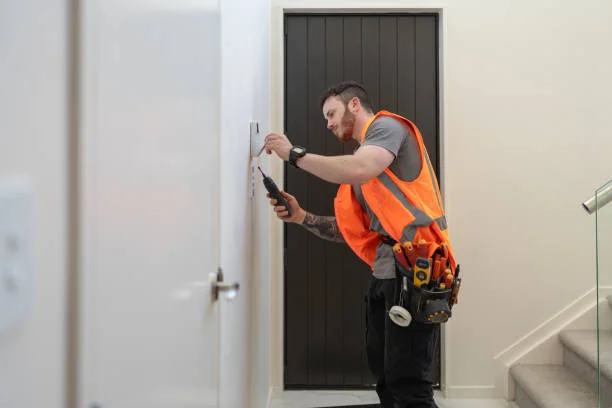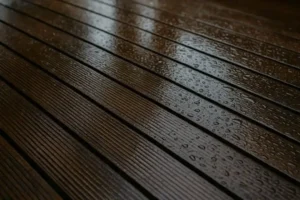Disclaimer: This guide provides general information on fire door installation but should not replace professional training or adherence to local fire safety regulations. For compliance and safety, consult a certified fire door installer or local building authority before proceeding.
Fire doors act as barriers, holding back blazes and smoke and giving individuals additional opportunities to escape during crises. Introducing a fire entryway can sound precarious, but with the proper guidance, anyone can make it happen.
A fire entryway isn’t similar to a standard entryway. It requires precise estimates, specialized equipment, and proper training. The information you gain ensures the task is done right and protects everyone.
Preparing for Installation
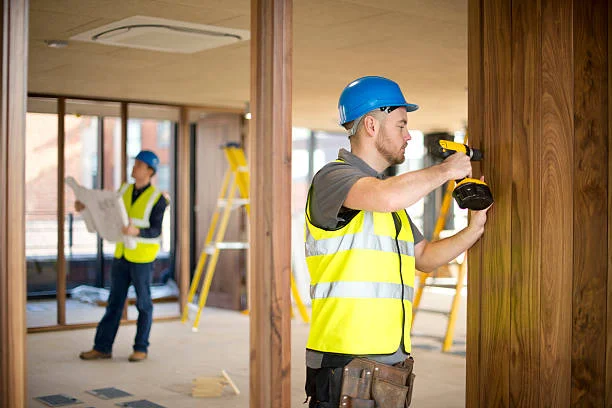
Planning is pivotal when introducing a fire entryway. It guarantees that the entryway fits impeccably, functions without a hitch, and complies with fire safety guidelines.
Assessing the Location and Building Codes
Priorities straight. Where is the fire entryway going? The area matters. Each building has its own principles about fire entryways. These principles exist to safeguard individuals. In this way, the neighborhood construction standards are checked. They’ll let you know what’s permitted and what isn’t. Ensure the picked spot checks out. A fire entryway close to a kitchen? Or on the other hand, in a capacity storeroom? Ponder where fire chances are most elevated.
Measuring the Door Frame
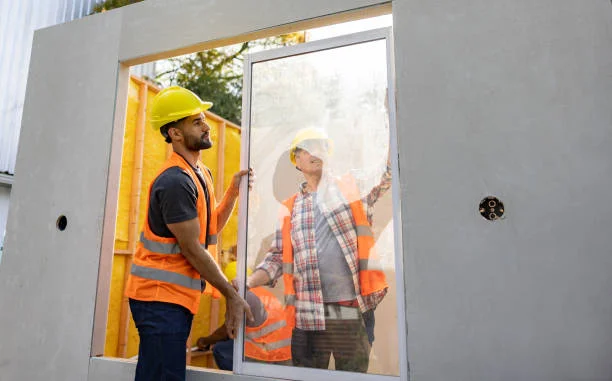
Precision is everything here. Grab a measuring tape and assess the door frame’s overall depth, height, and width. Double-check your numbers. A door that’s even slightly too big or too small will not work. Once the frame is set, adjustments are almost impossible.
Gathering Tools and Materials
Here’s a quick checklist of tools you’ll need:
- Drill and screws
- Spirit level
- Screwdriver
- Measuring tape
- Fire-rated foam or sealant
- Hinges and fire-rated hardware
Installing the Door Frame
The door frame is the foundation of a fire door. No matter how well the door is built, a poorly installed frame compromises its performance.
Fire-Rated Specifications
Not all door frames are suitable for fire doors. Fire-rated frames are designed to withstand high temperatures and are certified to confirm their fire resistance. A fire door installation course can help you identify and work with these frames, and make sure you never substitute them for standard ones. Training ensures the installer understands the importance of using fire-rated materials and never replacing them with standard door frames.
Securing the Frame
Position the frame in the wall opening. It should fit snugly, with no significant gaps around the edges. Temporary wedges can help hold it in place while you work. Use screws to secure the frame to the wall. Start at the corners and work your way around, tightening each screw gradually.
Alignment and Levelness
A lopsided edge causes issues with the entryway’s operation, from sticking to failing to close. Use the soul level to ensure the casing is perfectly aligned both vertically and horizontally. Adjust as needed before fully tightening the screws.
Hanging the Fire Door
This is where things begin meeting up. Hanging the fire entryway requires care and accuracy.
Connecting Pivots
Fire entryways are heavy, often much heavier than ordinary entryways. They need durable, fire-rated pivots, typically made of hardened steel, that can withstand extreme loads without buckling.
Most fire entryways require three pivots to achieve proper weight distribution. Start by joining the pivots to the actual entryway. Use screws that are incorporated with the pivots, as these are often fire-rated as well. Once associated, adjust the pivots to the edge and secure them in place.
Fitting the Door
Lift the door and place it in the frame. This part often requires two people, one to hold the door steady and the other to attach it. Line up the hinges carefully and insert the screws, tightening them gradually to ensure everything stays in place.
Clearance and Swing Direction
The clearance around the door must be precise. An ideal gap on the sides and top is about 3 mm. Too much clearance allows smoke and fire to pass through, while too little can cause the door to stick. Check the swing direction to make sure it matches the building’s fire plan. Fire doors are designed to swing in specific directions to guide people safely during an evacuation.
Adding Fire Door Hardware
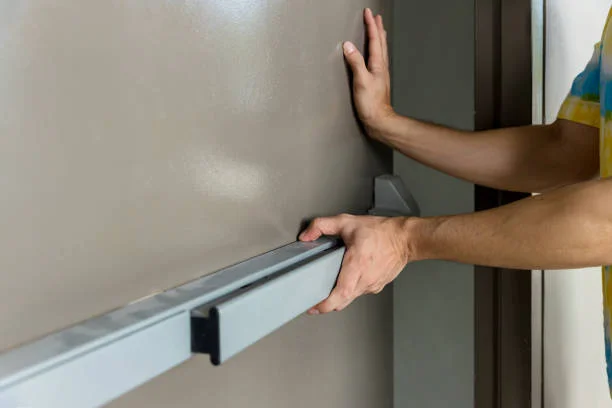
Fire-Rated Handles, Locks and Closers
The hardware on a fire door plays a vital role in fire safety. Use fire-rated handles and locks certified for the door’s fire resistance rating. The door closer ensures the door shuts automatically after being opened. Without a closer, the door could stay open during a fire, permitting flames and smoke to spread.
Intumescent Seals
Intumescent seals are a clever piece of technology. These strips are fitted around the edges of the door. When exposed to heat, they expand, sealing off gaps and preventing smoke from passing through. Install them carefully, following the manufacturer’s guidelines.
Hardware Safety Standards
Before finishing, ensure all hardware meets fire safety standards, as uncertified components can compromise the installation. Complicated hardware, such as fire extinguishers, requires fire extinguisher training to teach appointed persons how to conduct proper visual inspections.
Installing a fire door ensures safety, follows regulations, and protects lives. Once the door is in place, test it thoroughly. Check the frame, hardware, and seals. Everything should be perfect.
Fire doors need regular maintenance to stay effective. Hinges might loosen, seals could wear out, and closers may need adjustments. Keep an eye on these to ensure long-term performance.
So, whether you’re a pro or just starting, installing a fire door isn’t as daunting as it seems. With the proper prep, tools, and patience, anyone can do it.






